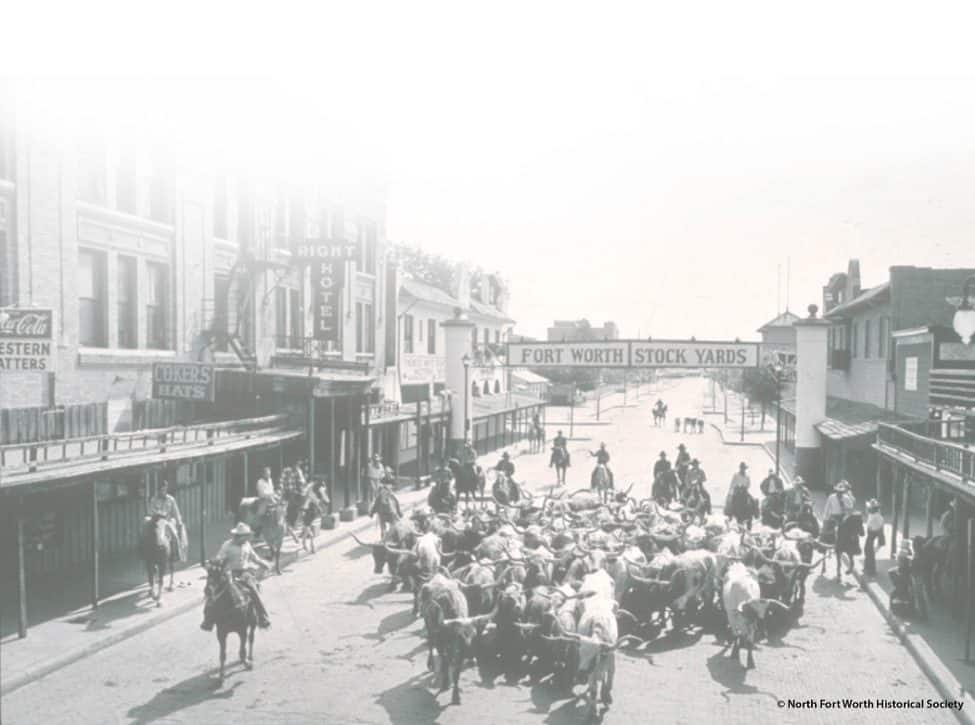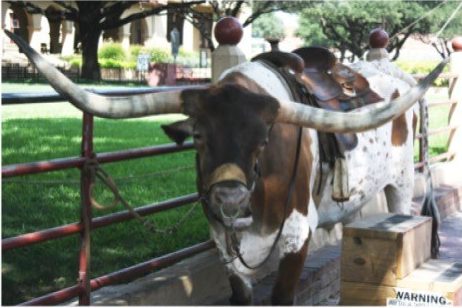Moving to Forth Worth a year-and-a half ago was like the City Mouse exchanging places with the Country Mouse. I lived in Houston for all but the last three years, and I was accustomed to a different kind of Texas than that of someone who has lived in Fort Worth for most of their life.
Houston is metropolitan and culturally diverse. There are shopping centers on every free stretch of land, numerous grocery stores, gas stations, and fast-food restaurants. Houstonians speak in many different accents, the least of them southern, and drive as if always in a hurry.

In contrast, Fort Worth is rural with wide-open spaces where cattle and horses roam freely on private ranches. Instead of a shopping center on every corner, newly developed subdivisions with recently built homes line the streets. The accents range from southern to more southern and, besides having an aversion to using turn signals, no one seems to be in a hurry to get anywhere.
When I first arrived, I was surprised to read signs that said Cowtown and see a Texas Longhorn on the city flag. My first thought was, “Fort Wort must be wild about its cattle,” but I didn’t know why. One of the biggest Fort Worth tourist attractions is the Fort Worth Stockyards, so I went for a visit to find out how Fort Worth got its nickname.

According to Fort Worth Stockyards history, Fort Worth became known as “Cowtown” sometime between 1866 and 1890 when cattle drovers herded cattle through the area. In 1876, the completion of the railroad meant livestock could be shipped. Fort Worth became such a major shipping point, the city built the Union Stockyards in 1887. After struggling to purchase enough cattle to attract ranchers, Union’s president invited wealthy Bostonian, Greenleif Simpson, to Fort Worth to invest. In 1893, Simpson purchased the company and renamed it the Fort Worth Stockyards. By the early 1900’s there were more investors who began constructing meat packing plants to keep the business in Fort Worth. It continued to prosper until after World War II and the decline of the railroad. Soon paved roads led to an increase in business for the trucking industry and the livestock market eventually drew business away from the Fort Worth Stockyards, which led to its closing. In 1976, it was declared a National Historic Site.

The Fort Worth Stockyards is located off East Exchange Avenue in downtown Fort Worth and open 7-days a week. Upon first glance, it’s like walking through the set of a western film without the cameras and gun fights. A cobblestone street replaced the dirt road in the main thoroughfare, and the names of men and women who have made significant contributions to Western heritage are emblazoned on the sidewalks in what has become known as the “Texas Trail of Fame.”

Some of the original early 1900’s buildings remain, and have received facelifts to become stores, museums, and/or better versions of themselves. The Livestock Exchange Building was built in 1902 and served as an office for cattle traders. It now houses the North Fort Worth Historical Society Museum, which provides historical information about the Stockyards in addition to photographs and artifacts.
Things to do
Cattle Drive – Twice a day at 11:30 a.m. and 4:00 p.m. a Trail Boss herds the steers down the trail. This is a great photo opportunity if you want to see the steer up-close or talk to the Trail Boss.
Legends of Texas – Immediately after the cattle drive, catch a true western gun fight re-enactment to see how the cowboys settled differences.
Cowtown Coliseum – The coliseum is one of the original buildings refurbished to meet modern-day standards. It was the site for the first rodeo and also where auctions took place. Tickets can be purchased for a Wild West Show with stunts and tricks. While you’re there, make sure to visit the Texas Rodeo Cowboy Hall of Fame.
Stockyards Train Station – Experience a train ride in a vintage 1896 steam locomotive or a 1953 diesel. Each 1-hour tour from the Stockyards follows a historical route known as the Cotton Belt Route and travels through Chisolm Trail to Grapevine, Texas.
Cattle Pen Maze – If you enjoy a challenge, test your skills against the clock in the cattle pen labyrinth.
What to bring
Cash – Parking and many of the attractions must be paid for in cash. Only the restaurants and stores accept credit/debit cards. There are several ATM’s within the stockyards.
Camera – Don’t leave home without a camera or camera phone. There are many activities to video and photograph.
Sun Protection – Bottled water is sold in some locations within the stockyard, but it is extremely hot in the Stockyards, so you will want to stay hydrated. A hat, sun glasses, and sunscreen will provide some protection from the sun as the shaded areas are mostly within the train tunnel.
Comfortable Footwear and Clothing – Expect to do a lot of walking and wear comfortable clothes and shoes. I saw many people dressed in western attire with hats and boots, but also shorts and tennis shoes. Wear what you feel most comfortable in.
After my visit to the Fort Worth Stockyards I had a better understanding of why Fort Worth held on to its roots and paid homage to the Longhorns. Their presence helped the city become what it is today. It’s something they’re proud of.







